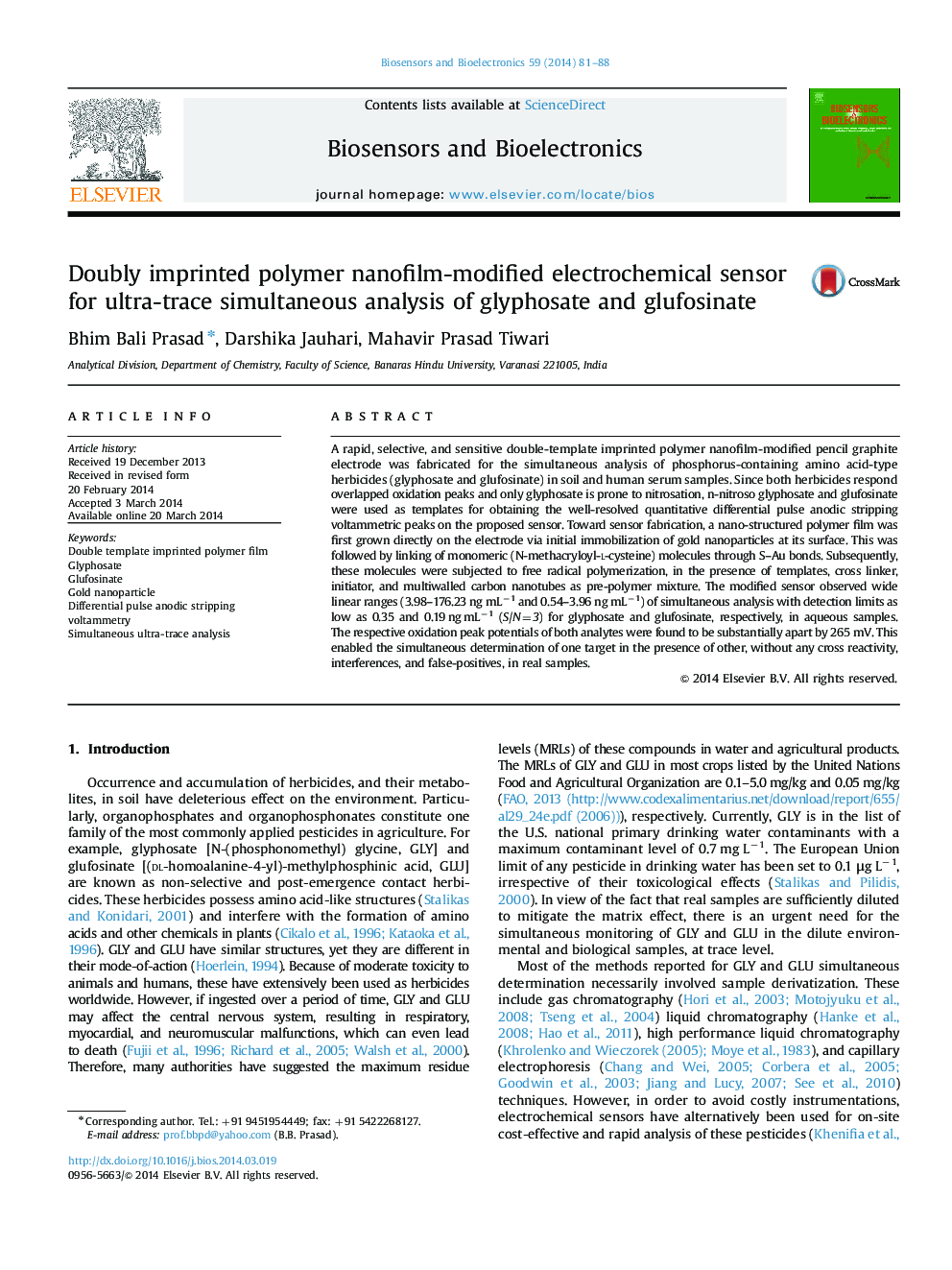| Article ID | Journal | Published Year | Pages | File Type |
|---|---|---|---|---|
| 7233403 | Biosensors and Bioelectronics | 2014 | 8 Pages |
Abstract
A rapid, selective, and sensitive double-template imprinted polymer nanofilm-modified pencil graphite electrode was fabricated for the simultaneous analysis of phosphorus-containing amino acid-type herbicides (glyphosate and glufosinate) in soil and human serum samples. Since both herbicides respond overlapped oxidation peaks and only glyphosate is prone to nitrosation, n-nitroso glyphosate and glufosinate were used as templates for obtaining the well-resolved quantitative differential pulse anodic stripping voltammetric peaks on the proposed sensor. Toward sensor fabrication, a nano-structured polymer film was first grown directly on the electrode via initial immobilization of gold nanoparticles at its surface. This was followed by linking of monomeric (N-methacryloyl-l-cysteine) molecules through S-Au bonds. Subsequently, these molecules were subjected to free radical polymerization, in the presence of templates, cross linker, initiator, and multiwalled carbon nanotubes as pre-polymer mixture. The modified sensor observed wide linear ranges (3.98-176.23 ng mLâ1 and 0.54-3.96 ng mLâ1) of simultaneous analysis with detection limits as low as 0.35 and 0.19 ng mLâ1 (S/N=3) for glyphosate and glufosinate, respectively, in aqueous samples. The respective oxidation peak potentials of both analytes were found to be substantially apart by 265 mV. This enabled the simultaneous determination of one target in the presence of other, without any cross reactivity, interferences, and false-positives, in real samples.
Related Topics
Physical Sciences and Engineering
Chemistry
Analytical Chemistry
Authors
Bhim Bali Prasad, Darshika Jauhari, Mahavir Prasad Tiwari,
